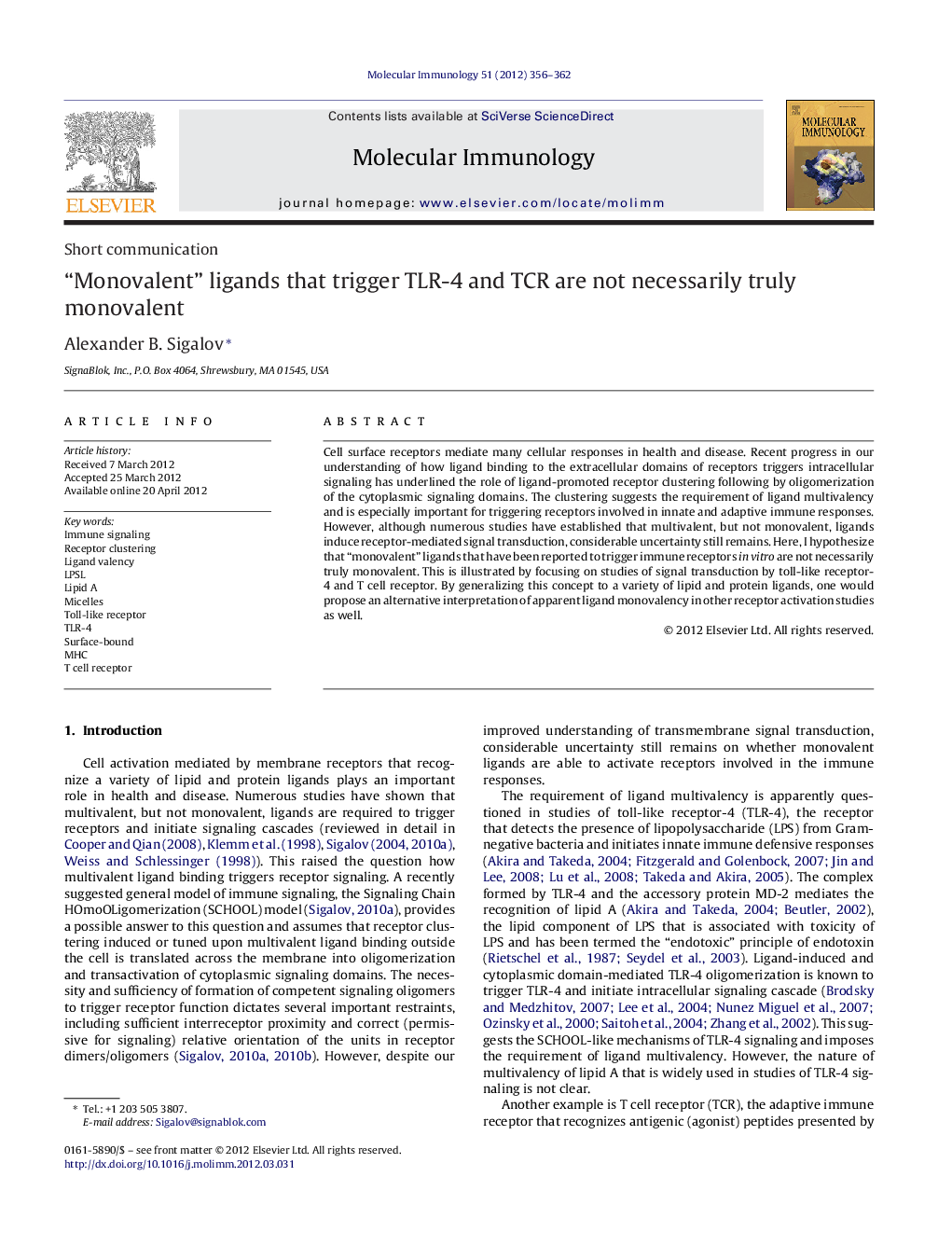| Article ID | Journal | Published Year | Pages | File Type |
|---|---|---|---|---|
| 5917396 | Molecular Immunology | 2012 | 7 Pages |
Cell surface receptors mediate many cellular responses in health and disease. Recent progress in our understanding of how ligand binding to the extracellular domains of receptors triggers intracellular signaling has underlined the role of ligand-promoted receptor clustering following by oligomerization of the cytoplasmic signaling domains. The clustering suggests the requirement of ligand multivalency and is especially important for triggering receptors involved in innate and adaptive immune responses. However, although numerous studies have established that multivalent, but not monovalent, ligands induce receptor-mediated signal transduction, considerable uncertainty still remains. Here, I hypothesize that “monovalent” ligands that have been reported to trigger immune receptors in vitro are not necessarily truly monovalent. This is illustrated by focusing on studies of signal transduction by toll-like receptor-4 and T cell receptor. By generalizing this concept to a variety of lipid and protein ligands, one would propose an alternative interpretation of apparent ligand monovalency in other receptor activation studies as well.
⺠Multivalency of apparently monovalent lipid and protein ligands is proposed. ⺠The concept is illustrated for toll-like receptor 4 and T cell receptor. ⺠Similar activation mechanism is proposed for multivalent lipid and protein ligands. ⺠The mechanism relies on oligomerization of cytoplasmic signaling domains. ⺠The concept suggests an alternative interpretation of receptor activation studies.
